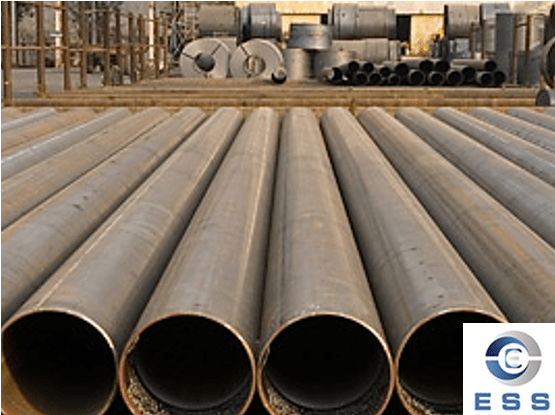Compressed Instability Equivalent Length of Heat Exchange Tubes
Background introduction
Heat exchange tubes play an important role in industrial production and are often used to transfer heat in heating, cooling, drying and other processes. During use, as the temperature and pressure change, the stress of the heat exchange tube will also change, requiring reasonable evaluation and design.
Among them, compressed instability is an important parameter in the mechanical design of heat exchange tubes. Specifically, when the pressure of the fluid in the tube exceeds a certain threshold, the vibration of the heat exchange tube shell will become unstable, which will affect its use effect. The compressed instability equivalent length is an indicator to describe the compressed instability situation, which is of great significance in the design and evaluation process.
Definition of instability equivalent length
The instability equivalent length (Le) refers to the heat transfer effect of the fluid when it is locally unstable, which is equivalent to the length of the heat exchanger when the full flow is uniformly flowing. In layman's terms, it is the equivalent heat exchanger length in the fluid instability area when the fluid becomes unstable.
Calculation method of equivalent length of instability under pressure
1. General method
Le=0.06D(ReD)^0.8
Where D is the inner diameter of the flow channel and ReD is the Reynolds number in the flow channel. This method is applicable to heat exchangers with Newtonian fluids and under steady conditions.
2. Special method
For some special cases, such as the case where heat transfer in the heat exchanger may be subject to stratification, the following formula can be used to calculate the equivalent length of instability:
Le=Fr/(0.09) * L
Where Fr is the Fougate number and L is the actual tube length. This method is applicable to calculating the equivalent length of instability of non-Newtonian fluids in heat exchangers.
The calculation method of equivalent length of instability under pressure mainly includes two steps, namely solving the fluid pressure according to the fluid dynamics equation and calculating the equivalent length of instability using the heat exchanger tube instability reduction formula.
Specifically, the formula for the equivalent length of pressure instability is:
Lcr = 0.03D[(ρνf/ρsμ)^(1/4)]h
Wherein, Lcr is the equivalent length of pressure instability, D is the inner diameter of the pipe, ρ is the fluid density, νf is the fluid kinematic viscosity, ρs is the density of the pipe wall material, μ is the material stiffness, and h is the pipe length.
In actual calculations, it is necessary to determine the values of relevant parameters, some of which can be obtained through experiments or literature, while others need to be determined according to specific working conditions and design requirements. For example, the fluid density and kinematic viscosity can be determined based on the fluid properties and operating temperature, the pipe wall material density and stiffness can be obtained through material manual inquiries or experiments, and the pipe length needs to be reasonably determined in combination with the specific fluid movement and force conditions.
Regardless of the calculation method used, actual parameters must be measured in engineering practice. Due to the influence of factors such as the structure of the heat exchanger and the properties of the fluid, the actual instability equivalent length is generally smaller than the theoretical calculation result, so it also needs to be corrected according to the actual operating conditions.
Actual case analysis
For a stainless steel heat exchange tube with a diameter of 50mm and a thickness of 5mm, during the heat transfer of hydrogen gas, the internal fluid pressure changes in the range of 15MPa~25MPa. The fluid is hydrogen, with specific properties of density of 0.082kg/m3 and kinematic viscosity of 0.0000193m2/s. The density of the tube wall material is 7800kg/m3, the stiffness is 2.1E11Pa, and the tube length is 10m.
According to the formula, the equivalent length of the heat exchange tube under pressure is:
Lcr=0.03×50[(0.082×0.0000193/7800×2.1E11)^(1/4)]×10≈1.03m
Therefore, for the design of the heat exchange tube, the equivalent length of the heat exchange tube under pressure needs to be guaranteed within 1.03m to ensure its stable use.
Factors affecting the instability equivalent length
1. The Reynolds number of the pipeline fluid;
2. The degree of straightness in the tube;
3. The friction resistance coefficient in the tube;
4. The degree of vortex generated in the tube;
5. The degree of influence of longitudinal flow in the tube;
6. The influence of bends and reducers on the flow state.
During the design and operation process, it is necessary to analyze the actual situation and make corrections and controls according to the actual situation.
Conclusion
The pressure instability equivalent length of the heat exchange tube is an important indicator to measure the safety of the heat exchange tube under pressure. This article provides a useful reference for relevant engineering and technical personnel by introducing the definition, calculation method and influencing factors of the instability equivalent length. In actual operation, we need to carefully analyze factors such as fluid properties and heat exchanger structure, teach students in accordance with their aptitude, and control the corresponding operating parameters to ensure the safe operation of the heat exchange tube.
In short, the pressure instability equivalent length is an important parameter in the design of
seamless pipe and has high practical value. Reasonable calculation and control of the equivalent length of pressure instability is an essential step in designing safe and reliable heat exchange tubes.













 Eastern Steel Manufacturing Co.,Ltd not only improve product production and sales services, but also provide additional value-added services. As long as you need, we can complete your specific needs together.
Eastern Steel Manufacturing Co.,Ltd not only improve product production and sales services, but also provide additional value-added services. As long as you need, we can complete your specific needs together.









